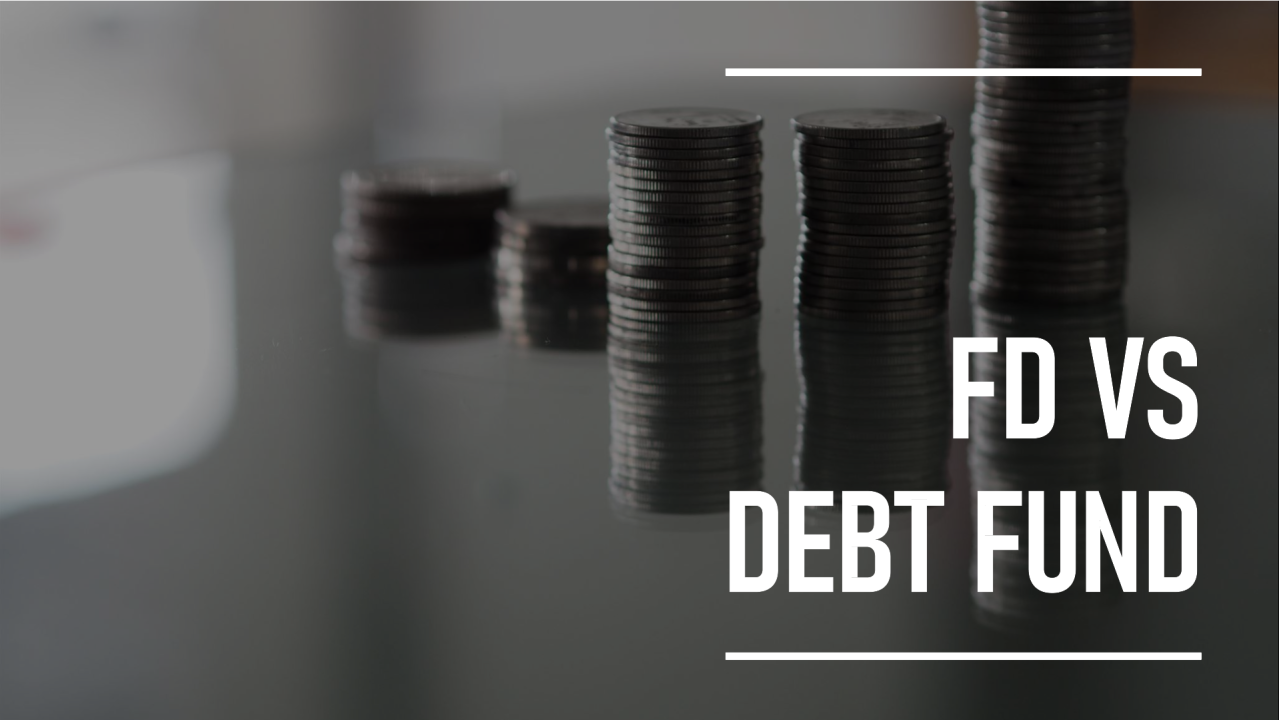Informed Financial Decisions
Making an informed financial decision is critical as it directly affects your future financial prospects. One cannot underestimate the relevance of thorough research and comparative analysis in financial planning. While investing, people mostly struggle between two popular investment options – Fixed Deposit (FD) and Debt Fund. The kernel in this contest is to understand which of these two fares well concerning the investor’s objectives and risk appetite. Introducing the concept of an FD vs Debt Fund Calculator can be instrumental in making sound investment decisions.
FD vs Debt Fund
Fixed Deposits (FDs) and Debt Funds are investment tools involving varying risk gradients and return promises. On the one hand, Fixed Deposits are time deposits held with banks offering higher interest rates than savings accounts. On the other hand, debt funds are investment avenues where the money is invested in fixed interest generating securities, including corporate bonds, government securities, treasury bills, commercial paper, and other money market instruments.
Using an FD vs Debt Fund Calculator
Now, let’s understand the use of an FD vs Debt Fund Calculator. This calculator can aid you in comparing the returns you would get on your investment in either of these. For instance, if you are investing INR 1,00,000 in an FD with an interest rate of 7% p.a. for one year, you would earn INR 7,000 at the end of the year. On the contrary, if you are investing the same amount in a debt fund offering a return of 8% p.a., your yield would be INR 8,000 after the year.
However, the tint of taxes immensely influences these raw calculations. FDs are taxed according to the tax slab of the investor, whereas Debt Funds enjoy the benefit of indexation if held for more than three years. This distinction makes a meaningful difference in the post-tax return. Thus, the ideal use of an FD versus Debt Fund calculator is to calculate the post-tax return.
For example, consider a person in the 30% tax bracket. For them, an FD offering 7% p.a. would effectively yield approximately 4.9% p.a. after tax reduction. On the flip side, if the same person invests in a Debt Fund returning 8% p.a., their yield would be 8% if held for one year but would rise to about 7.44% p.a. after considering indexation benefits.
Other Considerations
There are, however, numerous other factors to consider while comparing these two kinds of investment options. The rate of return is contingent on the market situation in the case of Debt Funds, whereas FDs offer a fixed interest rate. The risk involved is higher with Debt Funds as compared to the almost negligible risk with Fixed Deposit. However, Debt Funds have the potential to provide slightly higher returns as compared to FDs.
Additionally, liquidity and flexibility are higher in debt funds as compared to FDs, under which premature withdrawal attracts penalty charges. The entry and exit loads of a few Debt Funds need to be considered while calculating returns from them.
One must use the FD vs Debt Fund calculator with a clear understanding of its functions and limitations. Remember, the calculations performed are based on the inputs given by the investor and represent only a mathematical approximation of the returns.
Disclaimer:
The investor must understand that investments in the financial market, especially fixed income products, carry a risk. The above information should be considered only as a guide and not as a final decision. It is always recommended to consult with a certified financial planner or investment advisor before making any investment decisions.
Summary:
In any investment decision, comparing potential returns using a tool like an FD vs Debt Fund calculator can have substantial implications on your future finances. Fixed Deposits and Debt Funds offer different forms of risk and return. Although an FD guarantees a fixed return, the interest earned is taxed based on the individual’s tax slab, thus potentially reducing the effective returns. In contrast, Debt Funds may offer higher returns with indexation benefits if held for a more extended period. As an investor, it’s essential to consider factors like risk, market volatility, liquidity, and withdrawal penalties in both investment options. Always consulting with a certified financial planner or investment advisor is advisable before making such decisions.
